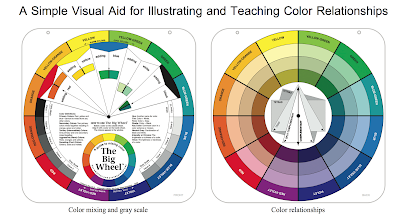Comparison of Harmonic and Dynamic Symmetry Armatures
http://www.the-art-of-composition.com/blog/the-relationship-between-dynamic-symmetry-and-the-harmonic-armature James Cowman
"For those who have taken the time to investigate both design systems, the harmonic armature and root rectangles, the artist may wonder what the difference is between them since they both provide harmonic divisions.In my opinion, I find using the 14 line armature of the rectangle easier to learn when it comes to analyzing art as well as applying it to a composition. For example, you can purchase any size canvas you want at your local art store and draw a 14 line armature to create a successful composition.
The other significant difference between both design systems is that Dynamic Symmetry allows the artist to break down the mother rectangle into smaller versions of the original rectangle. The painting below by Conor Walton demonstrates the relationship between the 14 line armature and the root four (2) Dynamic Symmetry rectangle (2:1 ratio)."
My Analysis
Assumption: the points of intersection of any diagonals, horizontals and verticals are harmonic points of division. Given a as the width of the canvas and b as the height. Then the distance from the intersection point to one of the following is the harmonic mean of a and b or some combination of a and b (sometimes only one): edge or corner. A corollary is that the distance between two intersections would be harmonic.
We denote a harmonic division as the intersection of any diagonal (not necessarily major) and another one or a vertical or horizontal. Note that if a horizontal or a vertical intersects at this point then it might be even 'more harmonic'. However, an intersection of a horizontal with a vertical without a diagonal passing through it is not considered 'harmonic'.
We will call the 4 main horizontal intersection points the "sweet spots". Note that in the harmonic armature these four sweet spots obey the rule of thirds (proof given elsewhere in this blog).
Dynamic Symmetry or Harmonic Grid:
- symmetric horizontally and vertically. This can lead to boring compositions; the artist is required to avoid mirror image sections.
The Dynamic Symmetry Grid:
- fewer number of harmonic divisions
- But additional harmonic divisions can be found when break down an area of interest further within a smaller rectangular area
- Canvases with wider proportions have more empty space in the middle
- The crossing lines, also called reciprocals, perpendicular to the main diagonals add dynamism to the composition.
Harmonic Armature Grid:
- Many diagonal lines for directing the eye (dashed lines).
- Extension of Rule of Thirds (left knee is at a ROT point)
Combined Grids (as a possibility and to illustrate the differences/similarities):
- many harmonic divisions (perhaps it is too hard to keep track of the divisions.)
- requires practice with its use since there are so many possibilities for identifying focal points




